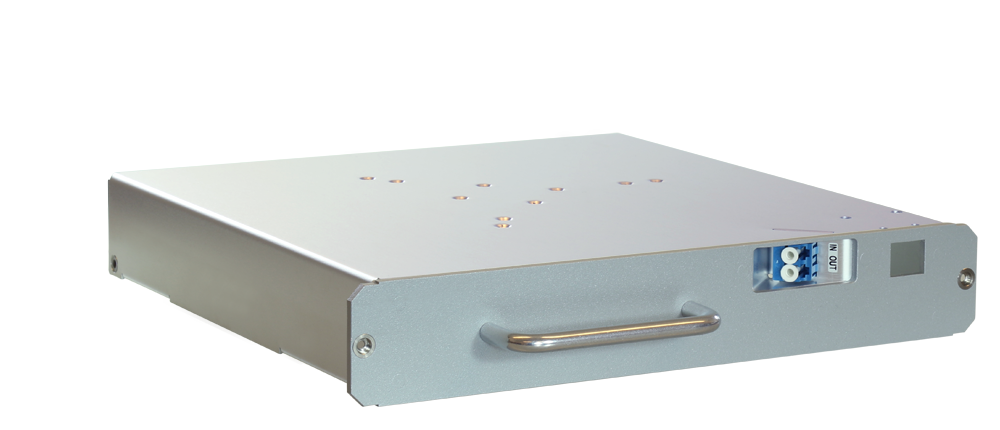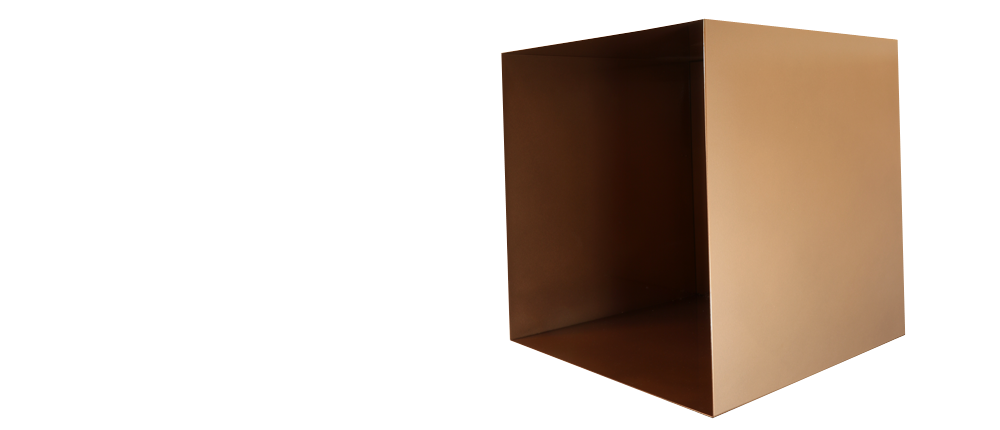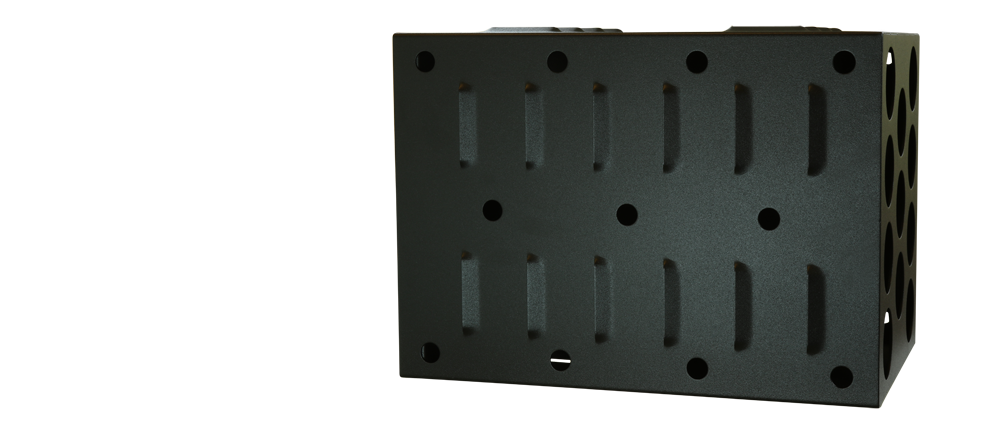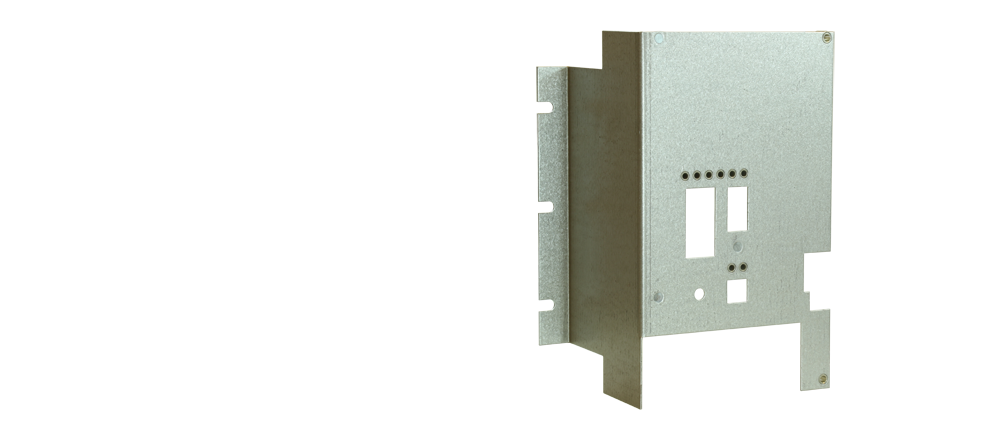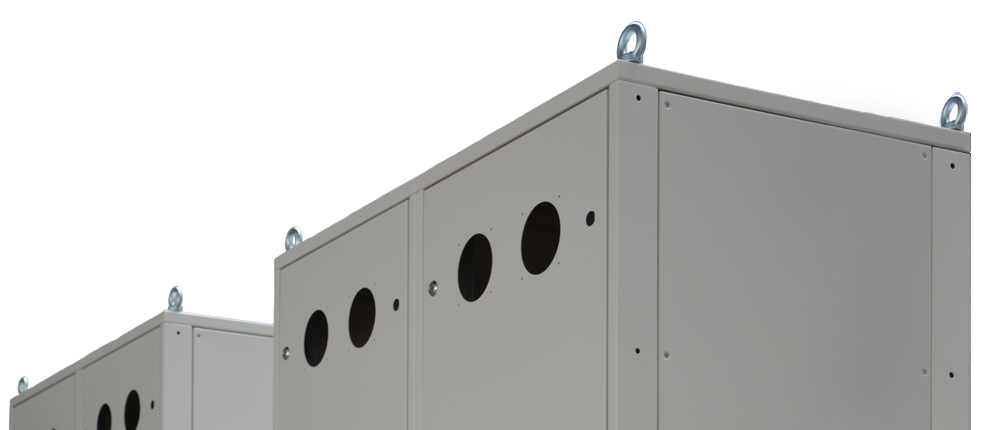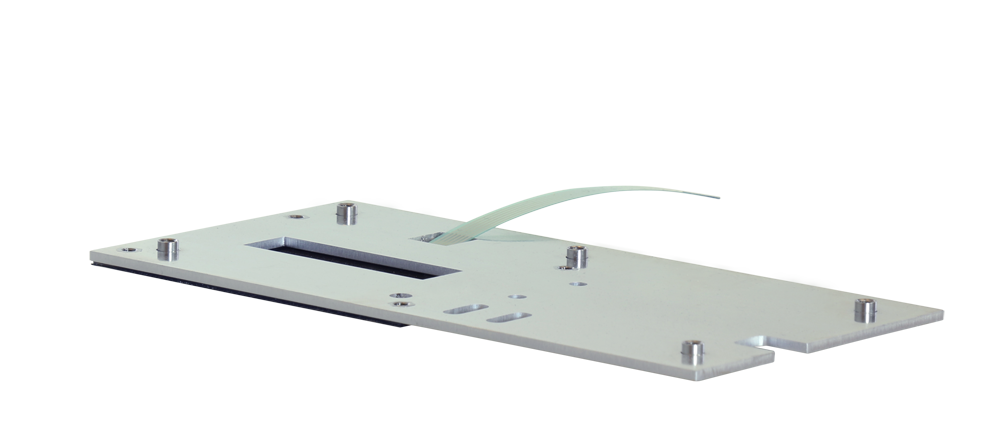Surface treatment of metal products:
Nordic Material Supply A/S surface treat metal products based on a line of surface treatment technologies and if our customers are requiring new solutions, we will implement such as we move forward in our development. All metal parts are manufactured and surface plated as confirmed to our customers and based on their design and requirements.
Powder paint
Nordic Material Supply A/S use powder paint for a line of metal products within steel, stainless steel and aluminium. Powder painting is a very environment friendly technology and result in strong long lasting surface.
We can delivery powder paint in all RAL colours and follow our customers requirements in choise of paint supplier and paint. When powder painted products are used together, it is very important that all products are done by the same powder paint source. This is secured by using specific supplier and part number of the powder paint. When thats known, it will always have the same appearance in regards to colour, brightness and structure.
Nordic Material Supply A/S manufactures and powder paint both small and large metal parts.
El-zinc (El-galvanizing)
El-galvanizing is a metallic surface treatment of metal parts with the purpose to avoid corrosion of the metal surface. El-galvanizing is one efficient way to prolong lifetime and keep finish by adding a layer of zinc on the surface. El-galvanizing is an elektrolytical process performed by submerging the metal parts saline solution and adding current to let the zinc travel to the surface of the metal parts.
After the El-galvanizing process, chromating can be added to improve the resistance of the surface and improve the finish.
El-galvanizing is a 5-25 μm thin layer of zinc. As the surface treatment is gives a bright result, surface abnormallities, such as scratches or other structures in the metal surface, will also be visible after the process. If the El-galvanizing is done by drumming, minor scratched to be expected from the parts drummed together. If El-galvanizing is done by hanging parts and submerging afterwards, then limited impact from the process itself, beside the handling.
Technical data for El-galvanizing:
- Melting point of zinc: 419°C
- Density: 7,1 g/cm3 at 20°C
- Maximal temperature for usage: below 200°C
Standards:
DS/EN 12329 or DIN 50961. 4 classes for zinc layers in El-galvanizing; 5, 8, 12 og 25 μm.
Hot Dip Galvanizing – HDG
Hot Dip Galvanizing is a very efficient method against corrosion with a thick layer of zinc as a result. Typically more than 60 μm of zink layer after Hot Dip Galvanizing. As steel is a more nobel metal than zinc (se nobleness of metals below), the thick zinc layer will protect the steel from oxidation by a catalytic process. Under the Hot Dip Galvanizing process, which is performed by submerging the metal parts in a 450-460° C hot zinc bath, the metal part surface and the zinc will create an alloy between the two metals, which secures a very strong attachment of the zinc to the metal surface.
The alloy is so strong, that a steel constructions can be transported and handled without damaging the surface in regards to performance. Hot Dip Galvanizing do not require maintenance, but will over time get a mat surface as a result of the oxidation of the zink surface. But because the zink layer is so thick, the surface treatment has a very long lifetime.
The parts for the Hot Dip Galvanizing process are prepared by pickling before the Hot Dip Galvanizing process itself. After the Hot Dip Galvanizing process, the parts are cleaned for excess zinc and quality controlled for satisfactory result.
Hot Dip Galvanizing is a rough surface treatment suited for performance rather than finish.
Aluzinc
Aluzinc is an alloy which is added to the surface by an electrolytic process by steels plants. Aluzinc consist of 55% aluminium, 43,4% zinc and 1,6% cilica. Through a controlled process it is possible to get an even and hard surface of aluzinc on steel sheets.
Chromating / Passivation
Chromating is used as surface treatment to improve the attachment before powder paint and to increase the corrosion resistance in general. Passivation is another word for chromating.
Chromating of metals are a process based on a oxidating, acid chromate bath. The temperature for the bath is normally 50-90 °C and process time 1 – 30 minutes. The chromating surface treatment gives the metal surface a so called conversion layer, consisting of tri- and hexavalent chrom (Cr3+ eller Cr6+) and oxidated metal, dependent on which chromating type is chosen. Only Cr3+ chromating is used to apply the RoHS directive. The chromating layer is transparent with a slight green, yellow and black colour, dependent of the bath setup and temperature. Chromating gives a good attachment for later surface treatment and gives the surface a certain corrosion resistance. The prime reason to chromate though, is as a primer for lackering and paint processing for best result. Chromating is especially used on magnesium- and zinc alloys.
We perform both blue- and white chromating in accordance with RoHS directive. Both types of chromating are based on chrom-type Cr3+ and thereby in accordance with the RoHS directive. We do not perform yellow chromating on the basis of chrom-type Cr6+, as this is not in accordance with the RoHS directive about limitation of certain metals in electronic divices etc.
Blue Chromating:
This chromating is used before other surface treatments. We typical powder paint after pretreatment with blue-chromating.
Blue chromating gives a bright, slightly iridescent surface and salt champer test gives about 24 hours.
White Chromating:
This chromating is often used as a stand alone surface treatment in connection to cabinets etc, where EMC protection is required. EMC protection require connection between the assembled parts and therefore no powder paint allowed at the connections. For products prepared for EMC protection, we cover specified surface before powder paint, so only white chromate are left to secure contact for best EMC protection.
White chromating gives a bright colour, a bit like stainless steel surface, slightly iridescent and salt champer test show over 150 hours.
Phosphating
Phosphating is a time efficient process between 5 – 50 min surface treatment, which is used before powder paint or other final surface treatments. The process establish a phosphate film on the metal surface, based on a surface plating process where phospate acid are used. Phosphating removes in some extent oxide layers (i.e. iron scaling from laser cutting), and creates a surface layer, which makes attachment better as a primer before powder paint or other final surface treatment. The phosphate process are done by spraying the metal parts with an acid mangan- or zinc-phosphate solution, added an oxidation solvent. Magnesium- and zinc alloys are normally phosphated by blended chrome acid / phosphore acid solutions.
Passivation
See chromating above.
Gas nitrocarburation
Surface treatment based on gas nitrocarburation is a thermo diffusion process, where the surface are changed without adding much thickness to the surface. Its a chemical change of the metal layer at the surface with change properties as a consequence.
Gas nitrocarburation has a line of performance caracteristics, which make it an interesting surface treatment when mechanical wear, small tolerances and finish are in focus. Gas nitrocarburation is environmental friendly and is performed in vacuum, where the metal surface are treated by different gasses. The process are performed at a temperature of 560-580 C, where nitrogen and carbon react with the metals steel surface. The treatment make a connection and diffusion zone, where the thickness depends on the steel type, time and temperature used. The connection zone gives the increased wear performance at moderate surface load.
Surface treatment of steel can benefit from this surface treatment, where gas nitrocarburation silicium calm and normalize some types of steel, including S 355 (St. 52.3) deep drawn sheets, casted iron and SG iron.
Gas nitrocarburating:
- Good wear resistance at moderate load
- Good fatique strength
- Improved corrosion protection
For increased strength can be obtained through a combination of nitro carburation and oxidation, where the total result for the surface treatment is an increased strength. Corr-i-dur is an example of a specialized surface treatment, where a combination of gas nitro carburation, plasma nitro carburation and oxidation are used to obtain the best result possible.
Burnishing
Burnishing is used as corrosion protection, decorative surface treatment and for tool parts.
Steel and casted iron can be burnished. Before burnishing can be done, the surface needs to be clean and without oxidation layer from welding or laser cutting. After bunishing, the surface is oiled to obtain a good corrosion protection.
As burnishing is a chemical process, corrosion protection is obtained for all surface designs. The process can give hydrogen embrittlement in steel, why high strenght steel needs to be de-hydronized before burnishing.
Burnishing are done by using baskets or hanging. Steel parts af degreased and pickled, so they are clean before the burnishing process. The burnishing process is a chemical process, where a layer of ironoxide is being attached to the surface for the steel. After burnishing the surface is being dried by hot air. The best burnishing is being done at 140°C, which gives the best colour and corrosion result.
Pickling
Pickling is used as a pre-treatment before burnishing of steel and as corrosion protection of stainless steel, so the protective layer on stainless steel are build before usage. Process time for pickling is between ½ – 4 hours, dependent on steel type, type of pickle and temperature. Pickling are done by usage of hydrofluoric acid, nitric acid and some surfactants. Pickling are also available as pickling pasta, used for pickling welding seams etc.
Pickling of stainless steel after prefabrication gives a better corrosion protection, as the surface of stainless steel are weakened by the prefabrication. The reason is that the 0,06 – 0,08 µm thin protection film of chrome-oxide gives stainless steel its corrosion resistance and this film is weakened under prefabrication of the stainless steel. Pickling is therefore an important matter, when stainless steel are used in rough environments, where the protection film of chrome-oxide can not be re-established before corrosion starts.
Tin plating
Surface treatment of metal parts with tin plating is corrosion protective and makes the surface obtainable for soldering. The tin layer give a low and stable electrical resistance, compared to copper and brass surfaces. Electric tinning are typically done in a layer thickness of 5 til 20 µm, dependent of requirements.
Electric tinning are approved for usage within food and electronic industry.
Galvanizing
See el-forzinc and Hot Dip Galvanizing above. El-galvanizing is another word for el-zinc, see above.
Anodizing
Anodizing of aluminium is a chemical surface treatment, where a layer of aluminiumoxide of 5-25 µm surface is created by changing the surface materials structure toward aluminiumoxide. Aluminium with anodized surface can be delivered in several colours.
Hard anodizing
hard anodizing is the same process as normal anodizing, where the purpose is to establish a layer of aluminiumoxide. For hard anodizing the thickness of the aluminiumoxide are significant thicker and typically over 50 µm. To obtain this thickness of aluminiumoxide layer, avanced production equipment is required, where both process cooling are performed and much longer process time are used.
Hard anodizing is a more precious surface treament process and only used for special purposes, as the production costs are significant higher compared to normal anodizing of aluminium.
We perform both types of anodizing, normal and hard anodizing for our customers.
Oxidation – corrosion of metals surface over time
Metals oxidate over time, but oxidation speed depents on kind of metal and alloy.
When more than one metal is used in combination, its important to take into account that metals have different ease of oxidate (oxidation ease of metals)
As information the ease of metals are listed below. Metals that tend to release electrones with ease are at the left and the the metals at the right has a less tendency to release electrones. As it is shown by **, zinc is left for iron, why zinc is an excellent surface treatment of adder to iron, as its the zinc that is corroded first due to the electrolytical processes than occur when moisture on the surface and in the air. For boats, zinc (Zn) is used to prevent the iron (Fe) pars from being oxidated.
K – Ba – Ca – Na – Mg – Al – Zn – Fe – Sn – Pb – H2 – Cu – Hg – Ag – Pt – Au
The ease of oxidation is valid for electrone release, which occur on the surface when vet or moisture environment. The more left the metal is positioned above, the easier the electrones are released. A metal to the left can give electrones metals at the right above.
Does Your company require surface treatment of processed steel and aluminium products, then contact us for a dialog and quote for Your solutions – info@nomas.dk or phone +45 50 300 250.
We have worked within steel and aluminium for years and with successful results for our industrial customers.
Nordic Material Supply A/S was founded in 2004 and prefabricates metal components and constructions in good quality and at competitive prices. All our productions are manufactured in Poland, Lithuania or China to meet our customers requirements.
Compared to our competitors, we are a cost effective organization, without expensive headquarters and no expensive production in Denmark. We deliver your products in a good quality, at agreed delivery time and at a competitive price level. We work to be your preferred supplier of metal based products.
Core parameters in our work are, that we are here to prefabricate quality products as specified and delivery as agreed. All production is based on production-to-customer-order and our prime customers are within the Danish industrial segment – Quality, Delivery time and Competitive pricing.
To guaranty good products, we aim for an on-going close dialog with our customers, which give an efficient knowledge transfer of required information and optimal understanding of the customers products and usage. Dependent on how products are used, product design and dimensions, we choose the best production setup and technology.
We can deliver a line of products made of steel, stainless steel and aluminium, based on sheets, profiles, bars and pipes; always based on our customers design and requirements.
We support a line of technologies to support our customers products, high finish, tolerances and designs. This includes cutting, bending, milling, grinding, surface plating and painting, and sub-assembly of metal components before delivery.
Technologies and services:
- Turret Punching
- Laser cutting
- CNC bending
- CNC milling
- CNC grinding
- CNC turning
- CNC drilling
- Powder paint
- Surface treatment technologies
- Sub-assembly
- Quality management
Metals:
- Steel (Steel sheets, bars, pipes and profiles)
- Stainless steel (Stainless steel sheets, bars, pipes and profiles)
- Aluminium
- Brass
- Copper
Surface treatment Technologies:
- Aluzinc
- Zinc
- Chromating – Chromital
- Bronzering
- Electro tinning
- Phosphating
- Galvanizing
- Gas nitrocarburizing – Corr-i-Dur
- Pickling
- Powder Paint
- Passivation (Yellow, blue and white passivation)
- Aludine
- Anodizing of aluminium
- Hard anodizing
- Hot dip Galvanizing (VFZ)
Tolerances and Norms:
We operate under RoHS, ISO and DIN norms as specified by our customers.
We refer to the following links:
For more information about our products, we refer to thin sheet products, CNC turret punching, CNC processing, laser cutting, water cutting, surface treatment, powder paint, steel, stainless steel, extruded aluminium profiles, plasma cutting, metal-rubber, quality management, downloads, links, strategy and vision, news and front page.
For general information about Nordic Material Supply A/S and products, we refer to the front page and the menu.
We handle all kinds of prefabrication of steel, stainless steel, brass, copper and aluminium. Do not hesitate to contact us for an open dialog about Your products and questions in general. We would be delighted to service Your organization also – Phone +45 50 300 250 or info@nomas.dk.




